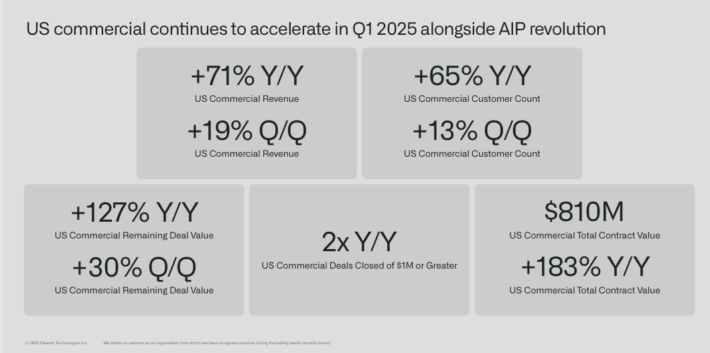This article/post contains references to products or services from one or more of our advertisers or partners. We may receive compensation when you click on links to those products or services
Does this scene sound familiar? You open your phone, sign in to your online brokerage account, and…it’s a sea of red…like it’s been for what seems like an eternity.
If you’ve ever held investments during a bear market or recession, you know how painful this feeling can be. And 2022 has shown us know how painfully volatile markets can be.
But what if your portfolio didn’t have to bleed quite so badly the next time markets were down? And, what if there was a way to pad your portfolio with a bit of downside protection?
Enter uncorrelated assets: a powerful tool any investor will appreciate.
In partnership with Masterworks, we’re covering everything you need to know about uncorrelated assets and how to start investing in them.
Check out Masterworks here >>>
What Are Uncorrelated Assets?
Asset correlation refers to how much investments move in tandem with one another. Typically, asset correlation scores range from -1 to 1, with negative 1 meaning assets have a completely inverse relationship while a score of positive one means assets are completely correlated. A score of zero means that there is no correlation.
The term “uncorrelated assets” therefore refers to assets that don’t have a strongly negative or positive correlation. And, generally, investors compare assets against the general stock market when looking for uncorrelated assets.
This entire concept stems from Modern Portfolio Theory (MPT), an investing strategy created by economist Harry Markowitz in 1952. MPT is a mathematical approach to portfolio building that tries to maximize returns while taking on a specifically level of risk. To accomplish this, it heavily relies on building a diverse portfolio, including many uncorrelated assets.
Modern Portfolio Theory is the framework many modern robo-advisors are built on. And, it’s essentially the cornerstone theory for how to build a strong portfolio while taking risk tolerance into account.
What Are Popular Uncorrelated Assets?
There are numerous types of uncorrelated assets you can consider. Which asset classes makes sense for you will depend on your specific investing goals and risk tolerance.
Gold & Silver
Historically, investors have turned to precious metals like gold and silver when markets are down. This is because precious metals like gold have historically shown little correlation to market movements or are even inversely correlated.
Investing in precious metals is also very easy. For some investors, buying bullion or jewelry is how they diversify their portfolios. But you can also buy gold and silver ETFs through most online brokers.
Some investors also view precious metals as a useful inflation hedge, which is another potential advantage of holding some of this asset class in your portfolio.
Fine Artwork
Another uncorrelated asset rising in popularity is multimillion dollar artwork. Historically, fine art doesn’t correlate strongly with stock and bond markets. After all, the price of a Picasso doesn’t fluctuate like the price of Tesla stock.
According to Citi analysts, fine art has a near 0 correlation to stocks. That means even if stocks dip, your art investments probably won’t go down with them. Research also shows contemporary artwork has averaged 13.8% annual gains since 1995, outpacing the S&P 500.
And while high costs made it impossible for everyday investors to add fine art to their portfolios, this has changed thanks to fractional investing platforms.

For example, companies like Masterworks let you invest in shares of blue-chip artwork from artists like Banksy, Monet, and Picasso. Shares start at just $20, but their members invest over $30,000 with them on average. Once you purchase shares, Masterworks typically holds artwork for a few years to allow for appreciation
Following an eventual sale, Masterworks pays shareholders.And, their track record has been quite impressive.
According to its website, they’ve handed members +21%,+ 27%, and +32% net returns from past offerings.
Granted, this is a long-term investment. However, there’s also a secondary market where you can buy and sell shares, which gives you some liquidity. In the past, only the ultra wealthy could capitalize on this uncorrelated asset.
Overall, alternative investing platforms like Masterworks are helping to democratize the world of artwork investing, and it turns out a lot of people want access. Over 587,000 people have recently signed up. Want to see what’s currently available?
Get Priority Access Right Here
Real Estate & REITs
Real estate and the stock market aren’t completely uncorrelated. After all, when markets are hurting, we often see interest rates increasing, which has a direct impact on mortgage rates.
That said, investments like REITs aren’t very strongly correlated to the market. According to EquityZen, part of the reason for this weaker correlation is the fact that real estate isn’t always as susceptible to macroeconomic news. Furthermore, assets that REITs hold generally have long-term leases, so cash flow is more stable.
As for how you can begin investing in real estate, there’s plenty of options. If you don’t have much capital, using real estate crowdfunding platforms like Fundrise or Arrived Homes are excellent places to start. These companies like you invest in shares of income-generating with $10 and $100 respectively, and you don’t have to be an accredited investor.
Of course, you can also consider buying a rental property if you have the funds, but this takes on more risk than the crowdfunding model.
Wine
Speaking of crowdfunding, this investing craze hasn’t just touched the real estate and artwork world. In fact, there’s a number of platforms that now let you invest in wine, letting you diversify your portfolio with another unique asset class.
And like the other asset classes in this list, wine doesn’t correlate strongly with stock and bond markets. In fact, it’s a historically stable asset class, and according to wine investing platform Vinovest, fine wine has also outperformed the S&P 500 since 2000.
Vinovest lets you build a portfolio of fine wines starting with $1,000. It selects wines based on your risk tolerance and goals, similarly to robo-advisors. Annual fees start at 2.85% but go down the more you invest.
Platforms like Vint also let you invest in wine starting with $25 if you want to add wine to your portfolio but begin with less money.
Emerging Market Bonds
One final uncorrelated asset you can consider for your portfolio are emerging market bonds. These are bonds that developing countries issue to fund development projects. They’re typically higher-risk than investments like corporate or government bonds from developed countries. However, the yields can be much higher.
According to Schwab, emerging market bonds aren’t highly correlated with U.S. equities and can offer similar returns to high-yield debt. These bonds do correlate more strongly with markets than U.S. Treasuries, but still have a weak-to-medium correlation:

However, the main downside of emerging market bonds is that they’re volatile, and therefore higher risk. During Covid-19 for example, emerging market bonds dropped 16% in a few weeks before central banks stepped in, highlighting just how volatile this investment can be:

In short, emerging market bonds are another option for investors seeking uncorrelated assets. But know that this investment requires a higher risk tolerance than many alternatives.
Advantages & Disadvantages of Investing in Uncorrelated Assets
Pros:
- Downside Protection: The main argument for investing in uncorrelated assets is to provide downside protection for your portfolio. In other words, if markets go down, some of your uncorrelated and inversely correlated assets can help protect your portfolio and maintain some returns. This is a strategy hedge funds use to protect their clients.
- Potential For Outsized Returns: Another potential advantage of uncorrelated assets is the potential to outperform the market. This is especially true for inversely correlated assets, which see dramatic gains when markets dip.
- Easy To Get Started: Thanks to fractional investing platforms, you can now invest in a variety of alternative assets with $10 or even less in some cases.
Cons:
- Potential Lack Of Income: One significant downside of uncorrelated assets is that many don’t generate fixed income. This can make them less appealing for retirement investing or investors who like securities like dividend stocks or bonds.
- Liquidity Concerns: Many uncorrelated assets are highly illiquid. This makes them a poor choice for locking up most of your portfolio, which is why many investors stick to the 5-10% range.
- Due Diligence Requirements: Investing in alternatives and uncorrelated assets can be much more complex than buying stocks or ETFs. There’s physical storage requirements for some assets like gold and silver. Forgeries and fakes can also be a concern in the artwork and collectibles space. Ultimately, this means investors should spend considerable time researching and vetting these types of uncorrelated assets before investing.
Bottom Line
As alternative investments become more popular, it’s only becoming easier to invest in uncorrelated assets. This is excellent news for everyday investors, and it’s not just hedge funds and private equity firms that get to benefit from this type of downside protection.
That said, this doesn’t mean investing in stocks, ETFs, mutual funds, and bonds isn’t a good idea. In reality, these types of investments are the bulk of many successful investor’s portfolios. And if you’re investing for income or growth, this isn’t a bad call.
Ultimately, you have to outline your risk tolerance and goal and then build a portfolio that makes sense for you. Diversification is important, but always make sure you’re investing with a game plan.
Ready to invest in art with Masterworks? Use this link to skip their waitlist line >>>















